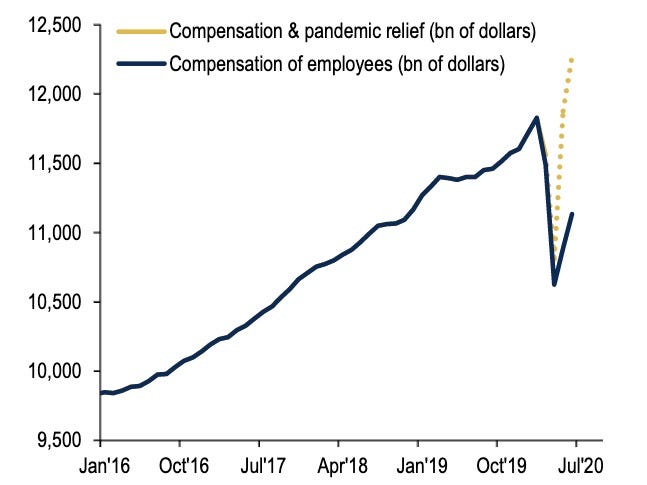- Bank of America released a chart that shows how significant the pandemic stimulus package was in filling the American compensation gap brought on by the pandemic.
- Now, the same aggregate income data shows how badly the US needs another one.
- Congress was unable to agree on a new stimulus before the last one expired at the end of July.
- Visit Business Insider’s homepage for more stories.
The last federal stimulus package did a good job of filling the compensation gap, per Bank of America Research. By May, aggregate consumption was at the same level it was in February.
Now, the same data points to how badly the US needs another.
Bank of America’s latest RIC report says the big economic risk from the job losses brought on by the pandemic is whether short-term separations – shallow cuts that can heal – turn into “scarring” long-term unemployment.
The bank pointed to another chart showing that the stimulus was the biggest in US peacetime.

And given that it now takes more than a year's pay to cover the average worker's basic needs, per a Manhattan Institute report, life for many was already uncertain before the pandemic.
While in 1985, it took 30 weeks for median-wage workers to pay for big fixed costs like housing, health care, a car, and education, it now takes 53 weeks out of a 52-week year to buy those same things, according to the Manhattan Institute's Cost of Thriving Index.

With that in mind, "thriving" seems to have become harder than ever for the average worker, and the pandemic has made it even harder.
